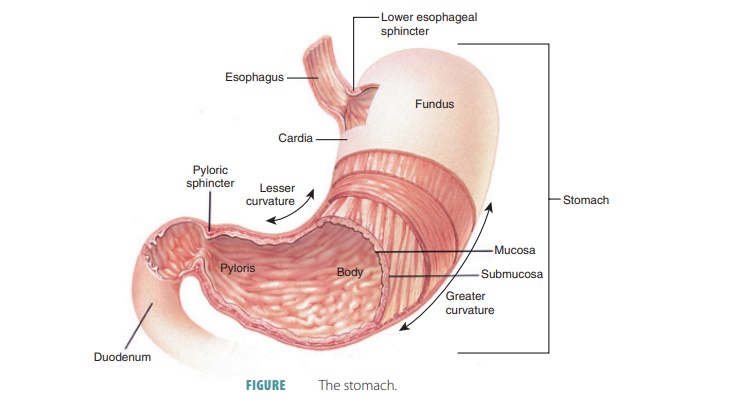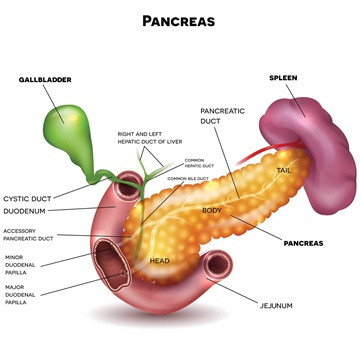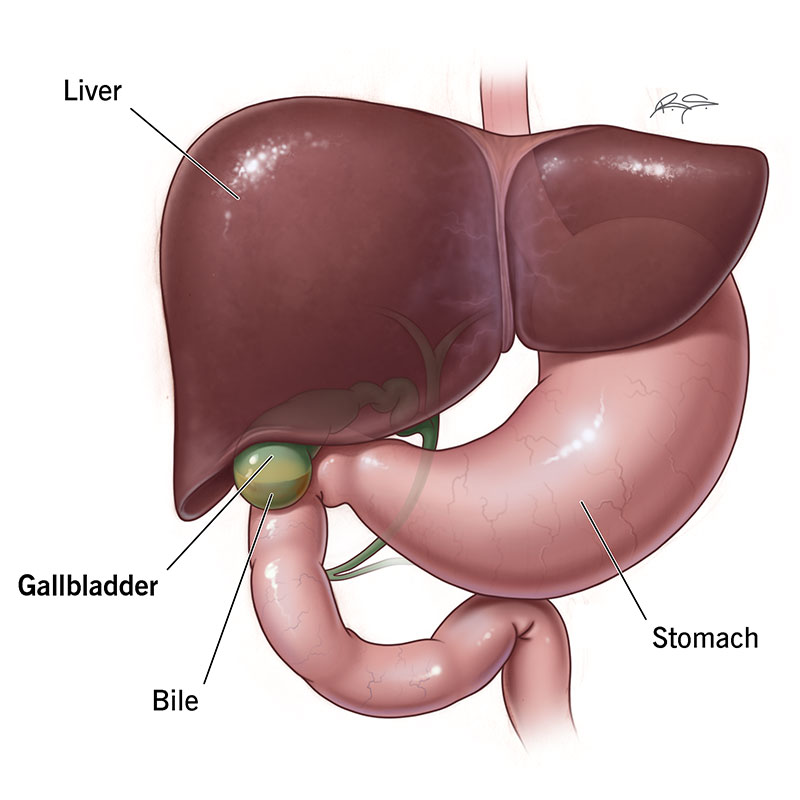Digestive System Organs Study Guide
Introduction
The digestive system comprises body parts that work together to convert food and liquids into the building blocks and energy that the body requires. The gastrointestinal (GI) tract, as well as your liver, pancreas, and gallbladder, comprise your digestive system. The GI tract is a series of organs that connect from your mouth to your anus.
What is Digestion?
When we eat, our body breaks down the food we eat into its essential nutrients, which our body requires for energy, growth, and repair; the process is called digestion. The process of digestion also generates waste that needs to be eliminated from our bodies.
Digestive System Organs
Many organs work together to break down the food we eat into small molecules that our body can use for energy and nutrition. The mouth, esophagus, stomach, small and large intestines, and anus are all digestive system organs.
Many “accessory” organs, such as the pancreas, liver, and gallbladder, produce hormones and chemicals important for digestion, although food does not pass through these organs.
The Different Organs of the Digestive System?
Here’s what we should know about the organs and functions of the human body’s digestive system.
Mouth
- The digestion process begins in the mouth.
- The food we consume is ground by our teeth and saliva, which results in a ball-like substance known as bolus.
- Salivary amylase begins to break down carbohydrates.
- The tongue pulls the food towards the rear of the mouth and into the esophagus when the food is soft and pliable.
Esophagus
- The muscular tube that links our mouth to our stomach is the esophagus.
- It expands as we swallow food.
- Food travels down the esophagus in three seconds, depending on its texture and consistency.
- Food is transported to the stomach via a sequence of muscle contractions called peristalsis.
- The only function of the esophagus is to transport food from mouth to the stomach.
- The lower esophageal sphincter, a ring-like muscle at the bottom of the esophagus, first relaxes to allow food to enter.
- The sphincter then tightens, preventing the stomach contents from re-entering the esophagus.
Stomach
- Food travels down our esophagus and into our stomach, a J-shaped hollow muscular pouch, when we swallow.
- The food is mixed with stomach enzymes resulting in a liquid called chyme.
- Cells in our stomach’s lining secrete strong acid and powerful enzymes that aid in breakdown.
- When the food in the stomach is sufficiently processed, they are released into the small intestine.
- Meat, milk, and cheese are all digested in the stomach by pepsin enzymes and hydrochloric acid, found in abundance in the stomach.
Small Intestine
- The small intestine consists of three segments: duodenum, jejunum, and ileum.
- It is a 22-foot-long muscular tube that further breaks down food with the help of bile from the liver and enzymes from the pancreas.
- The digestive juices from the pancreas and liver are also mixed with food in this organ through peristaltic motion.
- The duodenum, the first part of the small intestine, is responsible for the constant breakdown of the food.
- Jejunum and Ileum play a major role in nutrition absorption into the bloodstream.
- After passing through the small Intestine, food in this organ changes from semi-solid to liquid.
- As soon as the nutrients are absorbed, and the liquid residue from the small intestine has passed through, it continues to the colon.
Large Intestine
- The large intestine is a 6 feet long muscular tube.
- It is divided into three sections: cecum, colon, and rectum.
- These segments work together to complete any nutrient absorption and process waste into feces.
- Stool, or waste from the digestion process, is passed through the colon by peristalsis, first as a liquid and eventually as a solid.
- Water is removed from the stool as it passes through the colon.
- The stool is stored in the sigmoid (S-shaped) colon until emptied into the rectum once or twice a day by a “mass movement.”
Anus
- The anus is the last digestive organ.
- There are two anal sphincters (external and internal ) that allow us to hold on to the contents of our bowels until we can get to a restroom and flush them away.
Pancreas
- The pancreas is around 6 inches long and sits at the back of the abdomen, behind the stomach.
- The pancreas helps the process of digestion in the small intestine by secreting pancreatic juices, which are rich in sodium bicarbonate and enzyme. It also secretes insulin, which aids in blood sugar regulation.
Liver
- The liver is a large organ that is located on the right side of our bellies.
- It is rubbery to the touch and is very well protected by our rib cage.
- It performs many crucial functions.
- For starters, it produces bile, which the small intestine uses to digest fats in food.
- It also helps in metabolizing proteins, fats, and carbohydrates.
- It helps regulate blood sugar, stores glycogen for quick energy, and produces fibrinogen for blood clotting.
- It also produces vitamin A and recycles worn-out red blood cells.
Gallbladder
- The gallbladder, located beneath the liver, serves as a reservoir for bile, a yellow-green fluid composed of salts, cholesterol, and lecithin.
- The small intestine uses bile to digest fats.
Conclusion:
- The listed organs are the major organs of the digestive system.
- They help perform various actions leading to the digestion of food and other aspects of our body.
- This helps our body to perform proper digestion to remain healthy.
FAQs:
1. What are the functions of the organs of the digestive system?
Digestive system organs work together to break down the food you eat into little molecules that your body can use for energy and nutrition.
2. What are the 14 parts of the digestive system?
MouthOral CavityPharynxEsophagusStomachSmall IntestineLarge IntestineAppendixRectumAnusSalivary GlandsLiverPancreasGall Bladder
3. What are the 8 digestive organs?
Mouth, Esophagus, Stomach, Small Intestine, Large Intestine, Pancreas, Liver, Gall Bladder
4. What are the most important organs in the digestive system?
The most important organs of the digestive system are Mouth, Esophagus, Stomach, Small Intestine, Large Intestine, and Anus.
5. What are the 4 organs in the digestive system?
The 4 organs in the digestive system are Esophagus, Stomach, Small Intestine, and Large Intestine.
6. What are the 4 main functions of the digestive system?
The digestive system’s four vital functions are:
- Motility
- Digestion
- Absorption
- Secretion
7. What is the biggest digestive organ?
The large intestine is the largest digestive organ.
8. What is the most important organ in the body?
The brain is the most important organ in the body.
9. What is the most important organ of the digestive system?
The small intestine is the most important organ of the digestive system.
10. What is the least important organ in the digestive system?
Gall Bladder is the least important organ in the digestive system.
We hope you enjoyed studying this lesson and learned something cool about the Digestive System Organs! Join our Discord community to get any questions you may have answered and to engage with other students just like you! Don’t forget to download our App to experience our fun, VR classrooms – we promise, it makes studying much more fun!😎
Sources:
- Digestive System Organs. Accessed 1 Dec, 2021.https://www.hopkinsmedicine.org/health/wellness-and-prevention/how-digestion-works.
- The Digestive System. https://www.webmd.com/digestive-disorders/digestive-system. Accessed 1 Dec, 2021.
- Digestive System Organs. https://flexbooks.ck12.org/cbook/ck-12-biology-flexbook-2.0/section/13.34/primary/lesson/digestive-system-organs-bio/. Accessed 1 Dec, 2021.



